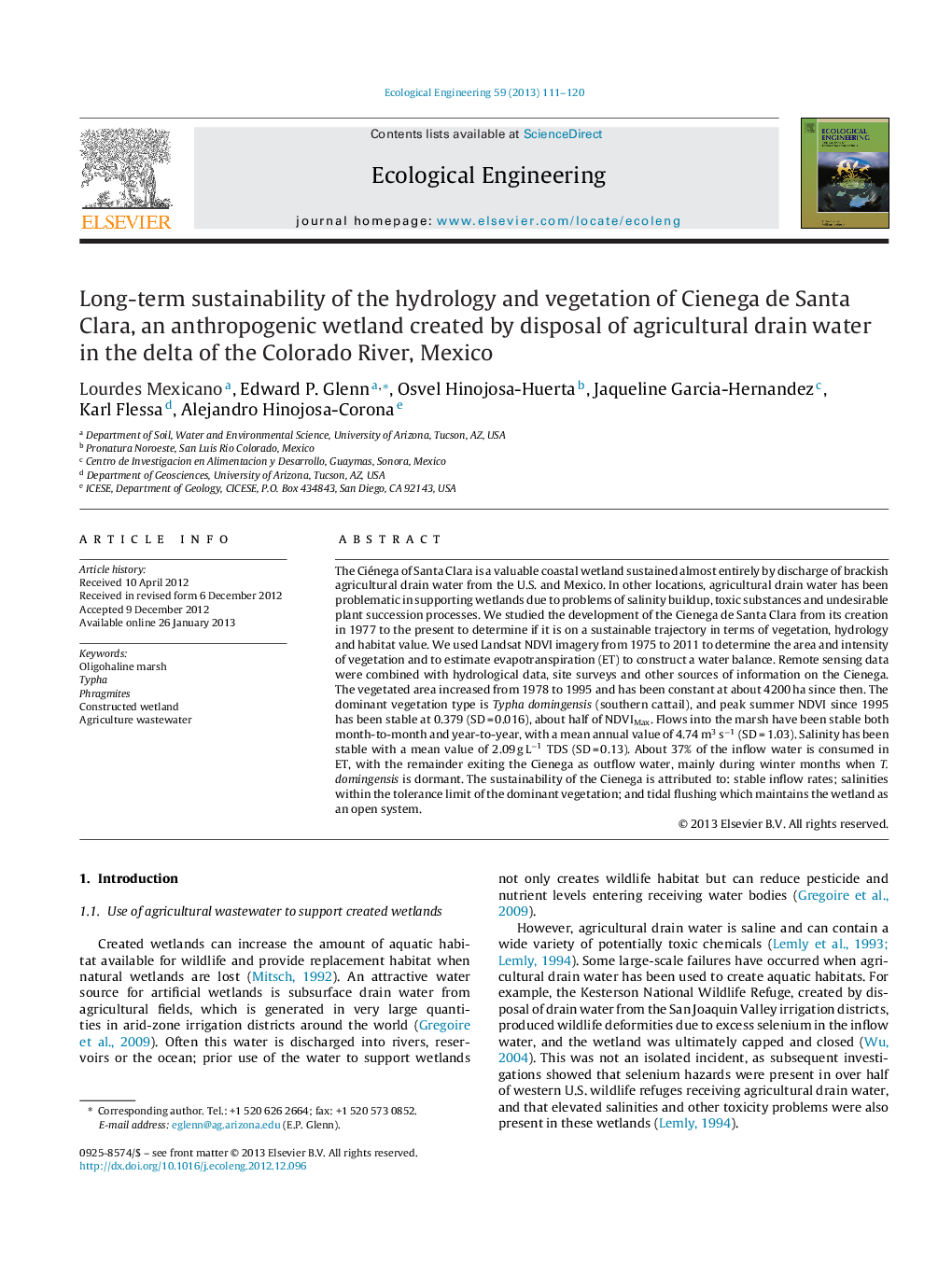| کد مقاله | کد نشریه | سال انتشار | مقاله انگلیسی | نسخه تمام متن |
|---|---|---|---|---|
| 4389717 | 1618039 | 2013 | 10 صفحه PDF | دانلود رایگان |

The Ciénega of Santa Clara is a valuable coastal wetland sustained almost entirely by discharge of brackish agricultural drain water from the U.S. and Mexico. In other locations, agricultural drain water has been problematic in supporting wetlands due to problems of salinity buildup, toxic substances and undesirable plant succession processes. We studied the development of the Cienega de Santa Clara from its creation in 1977 to the present to determine if it is on a sustainable trajectory in terms of vegetation, hydrology and habitat value. We used Landsat NDVI imagery from 1975 to 2011 to determine the area and intensity of vegetation and to estimate evapotranspiration (ET) to construct a water balance. Remote sensing data were combined with hydrological data, site surveys and other sources of information on the Cienega. The vegetated area increased from 1978 to 1995 and has been constant at about 4200 ha since then. The dominant vegetation type is Typha domingensis (southern cattail), and peak summer NDVI since 1995 has been stable at 0.379 (SD = 0.016), about half of NDVIMax. Flows into the marsh have been stable both month-to-month and year-to-year, with a mean annual value of 4.74 m3 s−1 (SD = 1.03). Salinity has been stable with a mean value of 2.09 g L−1 TDS (SD = 0.13). About 37% of the inflow water is consumed in ET, with the remainder exiting the Cienega as outflow water, mainly during winter months when T. domingensis is dormant. The sustainability of the Cienega is attributed to: stable inflow rates; salinities within the tolerance limit of the dominant vegetation; and tidal flushing which maintains the wetland as an open system.
Journal: Ecological Engineering - Volume 59, October 2013, Pages 111–120